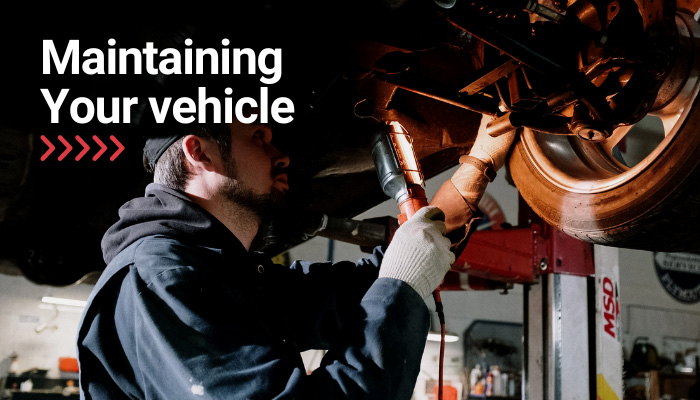
Long-haul trips can tax your body with loss of sleep and the many challenges of staying alert while driving. However, they can be an opportunity to see the country and a great way to make money. For your vehicle, however, the distance and long hours will strain the mechanics and take a toll. Long-haul drivers can often cover 400 to 600 miles each day. This means your vehicle will require regular preventative maintenance to operate smoothly from one season to the next. Let’s explore what to expect when maintaining your vehicle for long-haul trips.
Keeping up with the maintenance of the many parts of your vehicle is vital to ensuring you can rely on it to get you from point A to point B. Furthermore, it will ensure you can continue to make on-time deliveries to your customers.
Below are some suggestions for servicing vehicles that spend much of their time performing both short and long-haul trips. Structuring your maintenance around mileage checkpoints is the best way to stay on top of minor issues as they arise so you can address them before they escalate into major repairs.
Why Regular Maintenance is Important
A mileage-based schedule suggested by your manufacturer will ensure the equipment’s smooth operation, keep your vehicle on the road, and maximize its longevity and reliability.
There are four essential reasons to keep your vehicle’s maintenance current. These are:
- Helps to avoid costly repairs that will arise as parts begin to fail.
- Increases the lifespan of the truck to save money over the long run.
- Enhances safety while keeping all parts operating correctly to prevent problems.
- Staying on top of DOT Regulations by ensuring all systems are functioning correctly.
Inspections
You should always perform daily, pre-trip and post-trip inspections. During these checks, note whether any apparent problems exist and require repair or replacement.
Performing Proper Maintenance
How often certain service functions must be performed may depend on the type, age, number of miles, and the operating environment of the vehicle. However, each vehicle has a manufacturer’s recommended service time. These should be followed carefully to avoid any issues.
Typical scheduled maintenance activities that may occur at different intervals include:
- Oil and lubricant change
- Hose and belt check
- Oil, air, and fuel filter change
- Brake inspection and upgrade
- Maintain proper tire inflation
- Alignment and steering inspection
- Lighting and electrical inspection
- Inspect and clean the headlights
- Regularly check and replace fluids, including wiper fluid, coolant, brake fluid, transmission fluid, and filter, and any other pertinent to your equipment.
- Replace the wiper blades periodically.
- Inspect suspension components.
- Repair anything that may be a violation of DOT regulations immediately.
Failure of any of these systems can be problematic. Not only could your trip be delayed by equipment failure, but your safety and others could be compromised. Failure of brakes or tires, for example, can cause fatal accidents.
Not performing regular oil and filter changes reduces the lifetime of the engine and can require costly repairs and expensive delays.
Seasonal Maintenance
Adjusting the maintenance schedule to the seasons throughout the year can ensure nothing is missed while keeping your vehicle in top condition. Make sure you include these checks in your seasonal checklist.
- Air Conditioning Systems: In the springtime, as temperatures begin to rise, maintenance and replacement of cabin air filters, checking refrigerant levels, and inspecting hoses and belts will keep the system working efficiently.
- Tire Pressure and Condition: The air within your tires is affected by the outside temperature. Adjust these according to the manufacturer’s recommendation.
- Coolant Temperature Efficiency: Check the coolant to ensure it maintains proper engine temperature. Flush the system and replace the old coolant to keep the system operating as expected.
Pay Attention
Any change in the sound or operation of your vehicle can be a signal. Be aware and continually check to ensure everything is running correctly.
Maintaining your vehicle for long-haul trips not only provides peace of mind but can save you money in the long run. Use the guide above to set a maintenance schedule that works for you and your vehicle so you don’t miss out on any potential trips.

Leave a Reply